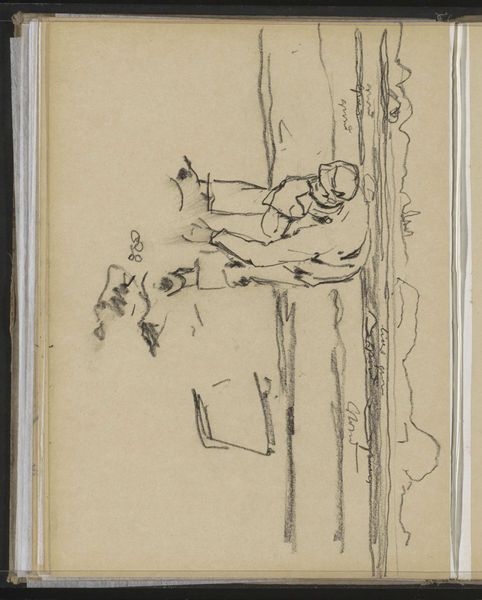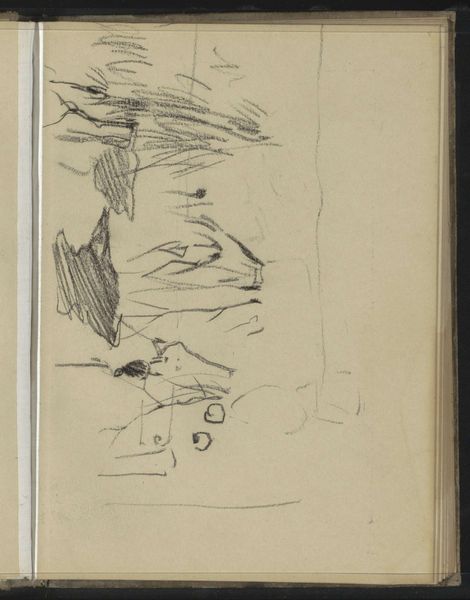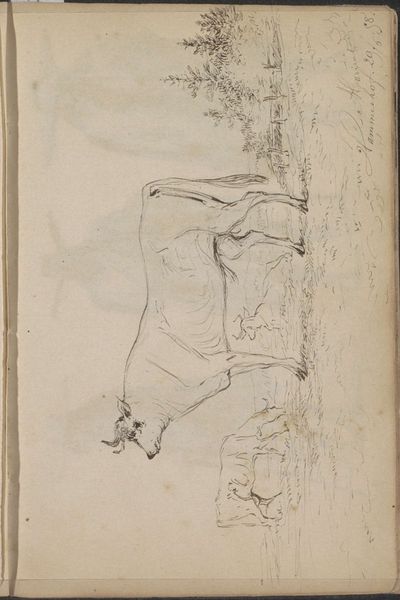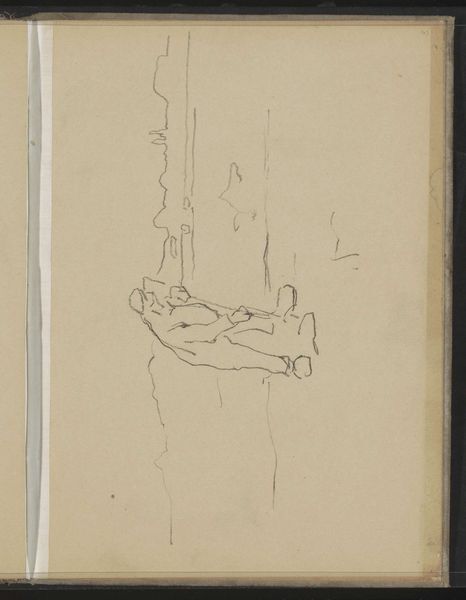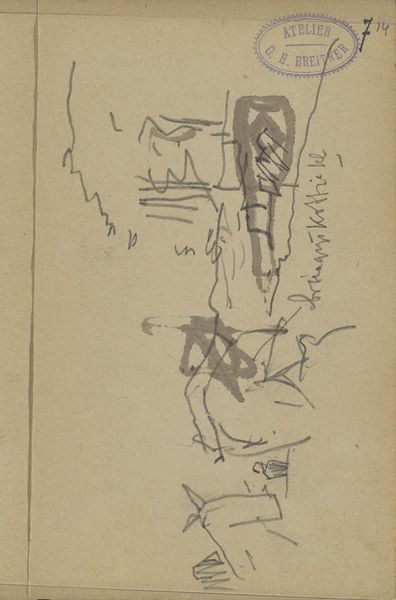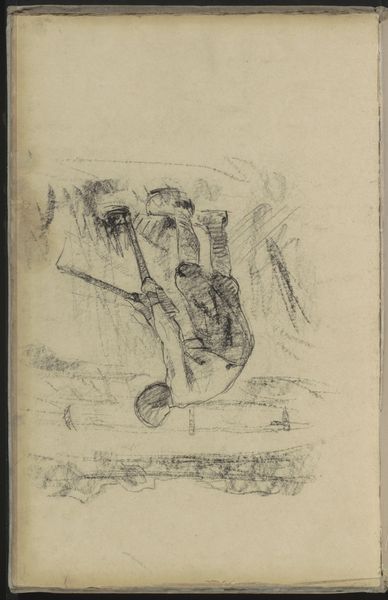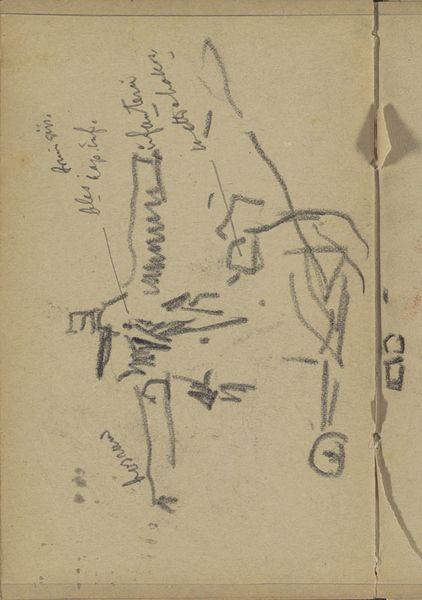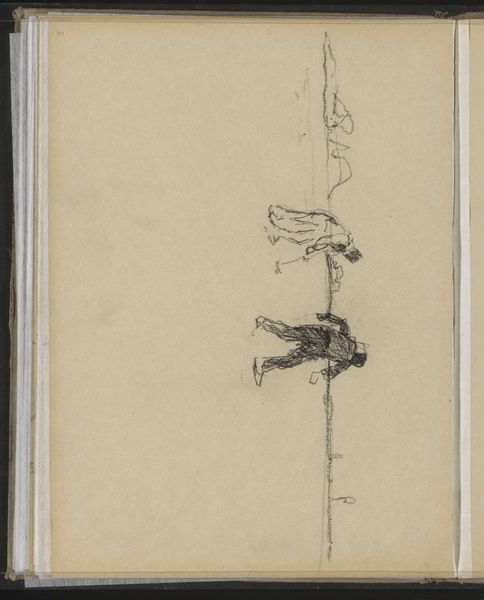
Copyright: Rijks Museum: Open Domain
Editor: Here we have Willem Witsen’s “Boer met een spade op het land,” made sometime between 1893 and 1897. It's a drawing on paper with pencil and what looks like watercolor. It feels like a very immediate, intimate glimpse into the life of a worker. What do you see in this piece? Curator: It's the directness of the sketch that really grabs me. Look at the labor involved, captured with such minimal material – pencil and paper. The social context is important here; late 19th century Dutch rural life, rendered with an almost brutal simplicity. The way Witsen uses these inexpensive materials – do you think that makes a statement? Editor: I suppose it underscores the subject matter itself. A field worker wouldn't likely be painted with oils on a canvas at this time, right? It emphasizes the ordinary and accessible. Curator: Exactly. And think about the commodification of art. Even sketches become objects to be bought and sold. How does this impact our perception of the worker's labor, when it’s turned into a commodity as well? Is it a reflection of labour? Or is it a capture of that labour, transformed into capital? Editor: That's a compelling point. It’s not just the scene depicted but how the artwork itself enters the system of production and consumption. It changes everything about how we might perceive it. Curator: Yes. So, seeing the marks on the page makes us consider art production as another kind of labor and consider who it's intended for. Editor: I hadn't thought about it that way before, it certainly adds another layer to appreciating the work! Curator: It's all about seeing the material realities behind the image. Hopefully this enriches our viewing today.
Comments
No comments
Be the first to comment and join the conversation on the ultimate creative platform.
